Affiliate disclosure: This post may contain affiliate links. Please see our Privacy Policy.
Perfect for the beginning forager, miner’s lettuce is a delicious, juicy and sweet wild green. Learn how and when to find this shade-loving green!
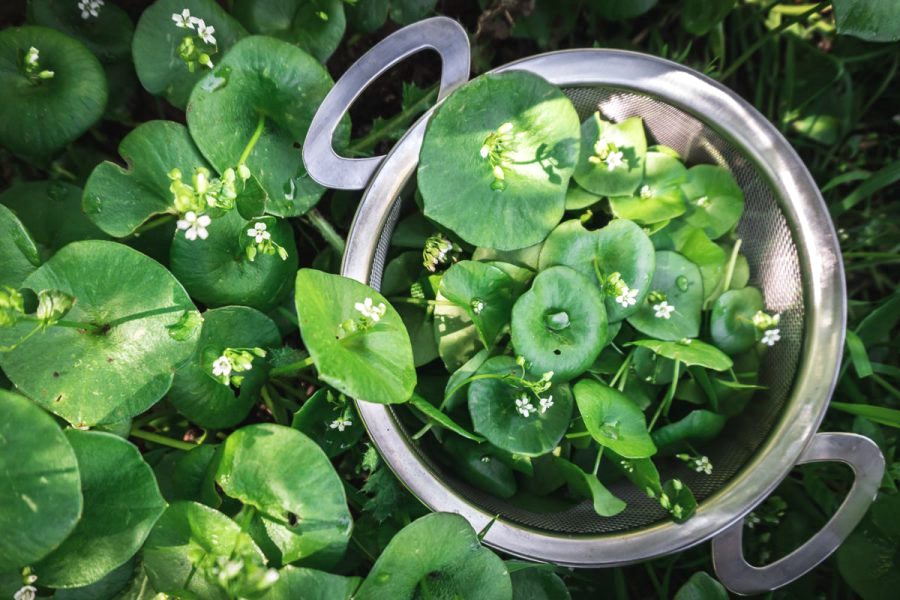
(This post was contributed by Melissa Keyser.)
The very first wild food that I learned how to identify, and would subsequently snack on while playing out in the woods when I was a kid, was miner’s lettuce.
I’d like to think my knowledge of this succulent green leaf comes from some deep down intuitive knowledge. But, in reality, I’m assuming my dad was the one to teach me about the plant.
He was the one I spent most of the time tagging after, as he tramped through the redwood forest we called home. However, I have no clear recollection of the moment, eating miner’s lettuce seems to come as natural as knowing how to walk.
Later, when I was working as a naturalist, miner’s lettuce was always a favorite to show to my classes. I’d point it out, letting my students pick their own, allowing them their first taste of wild food, just like I had done years before.
Spring is the best time to forage for this tender wild green, and with forecasted weather in the 80s for later this week, I made sure to go gather some before they dried up.
If you are new to wild foods, this is the best one to start with. Unlike nettles or other greens that might need processing before cooking, you can eat miner’s lettuce right on the trail. And unlike berries or other green leaves that might cause confusion on identification, there is absolutely no mistaking this one.
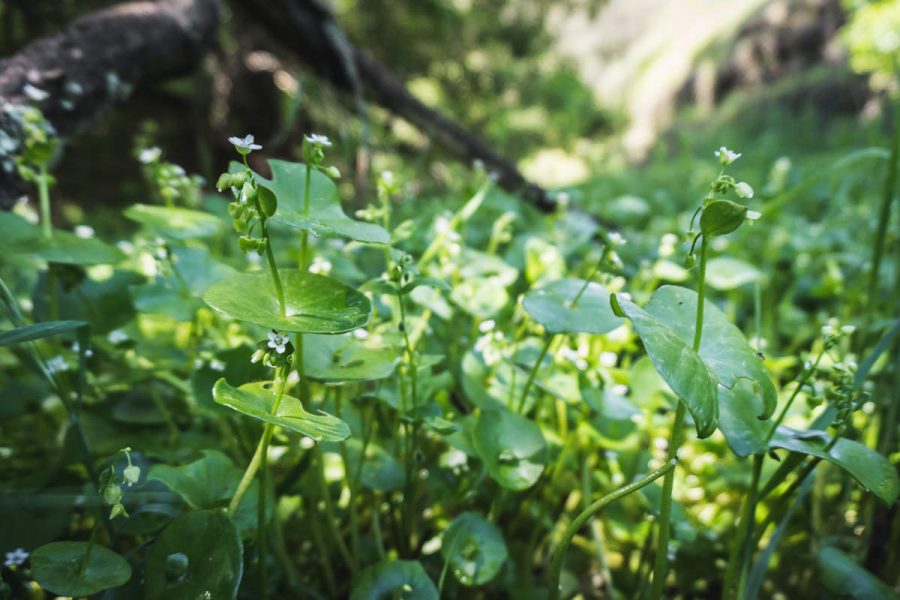
Why You Should Forage for Miner’s Lettuce this Spring
Miner’s lettuce gets its name from the miners of the California gold rush. They ate the wild green in order to prevent scurvy, which they learned from the native peoples. They are a great source of iron and vitamins A and C.
Miner’s lettuce had a delicate flavor and crisp texture. The leaves hold lots of water, and make it almost succulent, slightly like purslane. It lacks the acid that many other wild greens have, making it buttery, tender, and sweet. The stem, leaf, and flower are all edible, and you can enjoy it at any stage in its growth cycle.
I’ve never seen miner’s lettuce offered in my local stores or farmer’s market, so the only way you can savor this green is to head out to the wild (or, possibly, your backyard) and forage some for yourself. They don’t store well so if you’re lucky enough to find some at a market near you, plan on using immediately. If you want to add a bit of wild to your garden, you can also grow miner’s lettuce from seed in cool moist soil in the early spring.
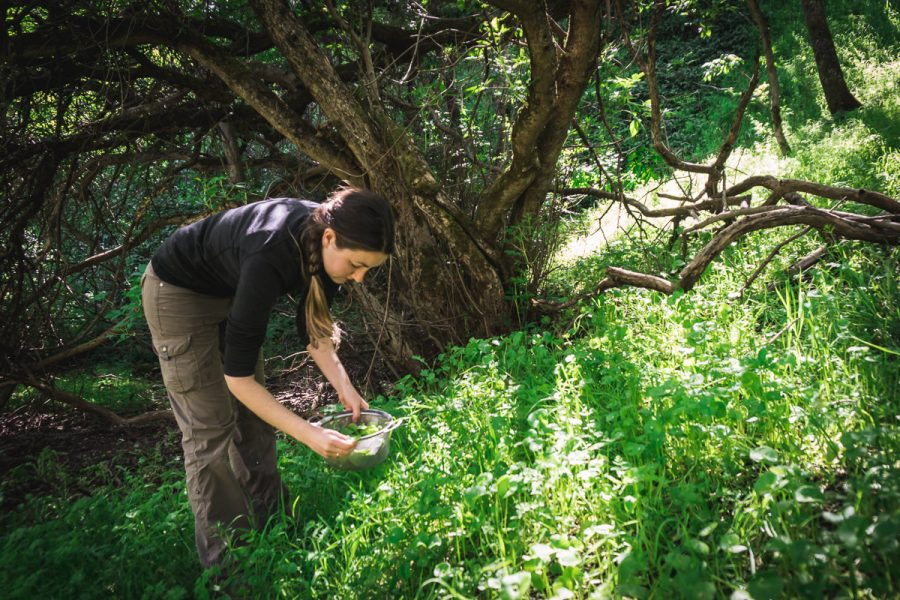
When to Find Miner’s Lettuce
The duration of the miner’s lettuce season depends on how shady and how wet it is. It starts to make its appearance once the rains come, December through April is usually the best season in Northern California.
In cooler spots, it’ll be a bit later than that, but still in the early spring. They are edible at any time but are best before they flower.
If it’s growing in a shady and damp spot, like under heavy tree canopy, the quality of the leaves will be much better, and larger, for longer. In sunnier and drier areas, the leaves will be smaller, less succulent, and set flowers faster. The coast will have a longer season than the inland valley.
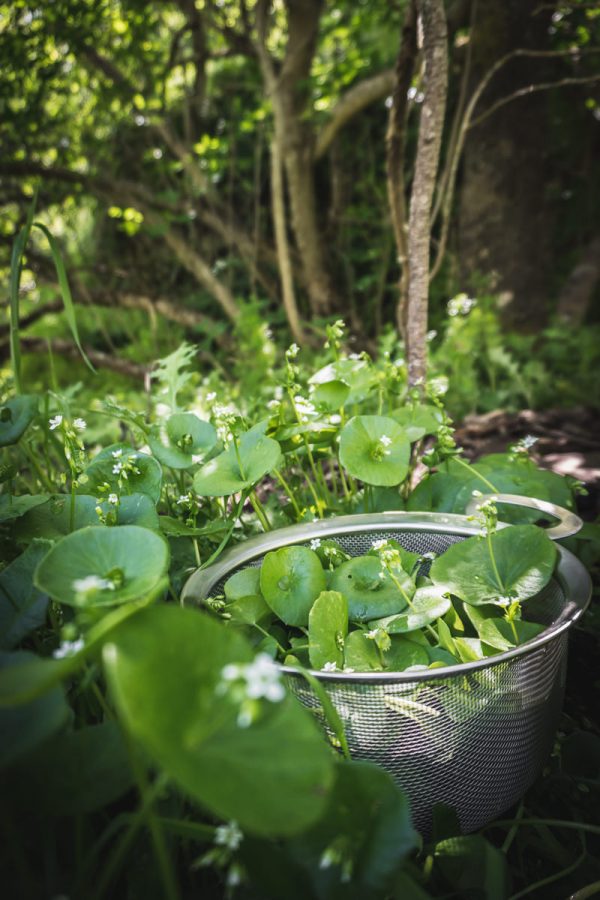
Where to Find Miner’s Lettuce
Claytonia perfoliata is found throughout California. I spot it most frequently in woodland, forest or riparian ecosystems. The ones I collected to document this post were collected in a mature oak woodland, after heavy rain.
Miner’s lettuce is not hard to find, simply keep your eye out when walking the trail. When there is one, there is many. It spreads by seed, so you’ll often find whole fields or hillsides covered with it.
Not in California? Don’t fret. You can actually buy seeds for it and you can grow in almost all zones. It grows easy and fast, so make sure to plant away from other less vigorous native plants. If you’re outside of California and see it growing wild, please report in and I’ll update this!
UPDATE: I’ve been informed by friends on Instagram that they have miner’s lettuce also in Oregon, Washington, British Colombia, and Michigan!
How to Identify Miner’s Lettuce
Miner’s lettuce is an easy one to identify- it has a single round leaf. Technically, it’s a pair of leaves that are united, forming a perfoliate leaf shape. But just look for the round leaf.
When they first emerge in the spring, they are somewhat spade-shaped, then later form the circle as they mature.
Each plant is a clump of about 5 thin, smooth stems, each with the single round leaf on the top. The flower stalk emerges from the center of the circular leaf and is a delicate, nodding cluster of small, white blooms.
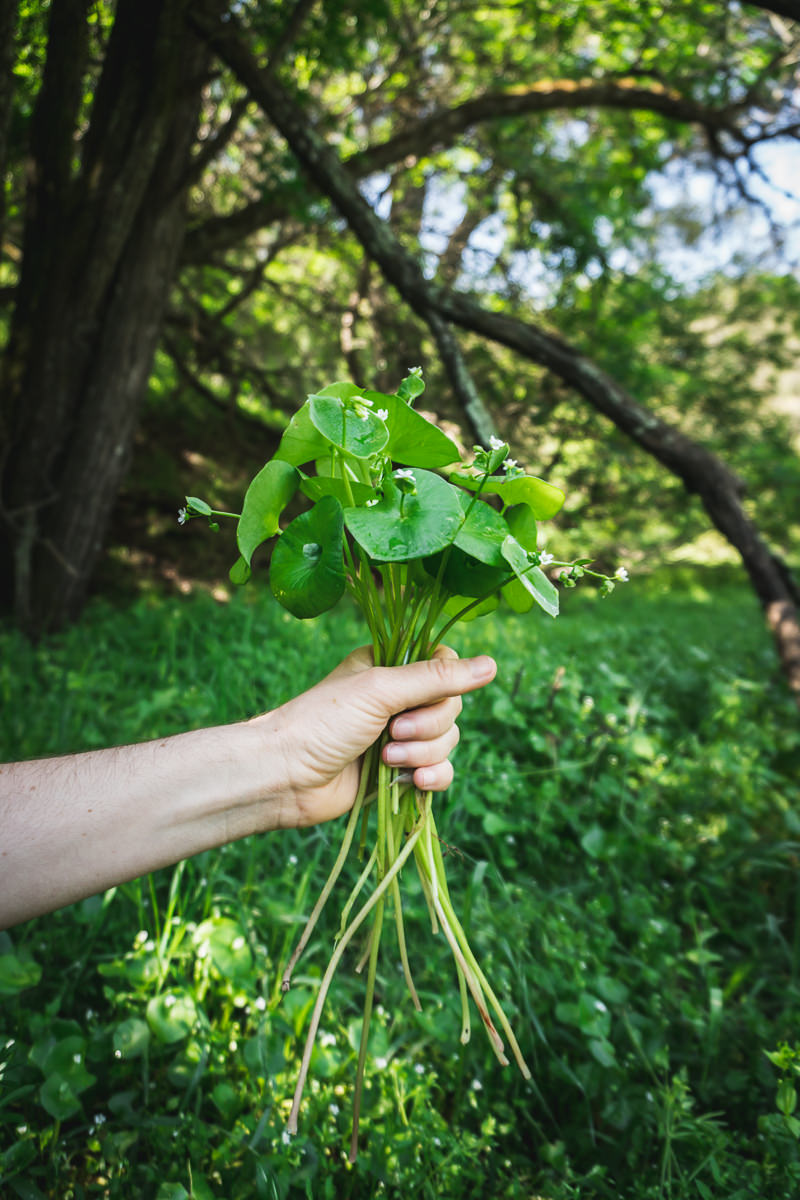
How to Harvest Miner’s Lettuce
The plant is fairly fragile, and it’s easy to accidentally pluck the whole plant up from the ground, particularly if you are in moist areas. Either take the whole plant home, less the soil, or carefully pinch the stems to take just the leaf.
Choose whole leaves that are free of insect bites, and are shiny and bright green. Avoid those that are yellowed or have damaged edges.
Miner’s lettuce is prolific, so it’s not in danger of overharvesting. With all foraging and outdoor activities, don’t be a jerk. Take only what you need, making sure to leave some to flower and reseed and replenish the population.
There is usually ample amounts growing along the trail edge, but if you venture off, tread lightly. Don’t crush wildflowers. Avoid foraging on roadside edges, don’t trespass, and pack out any trash, even if it’s not yours.
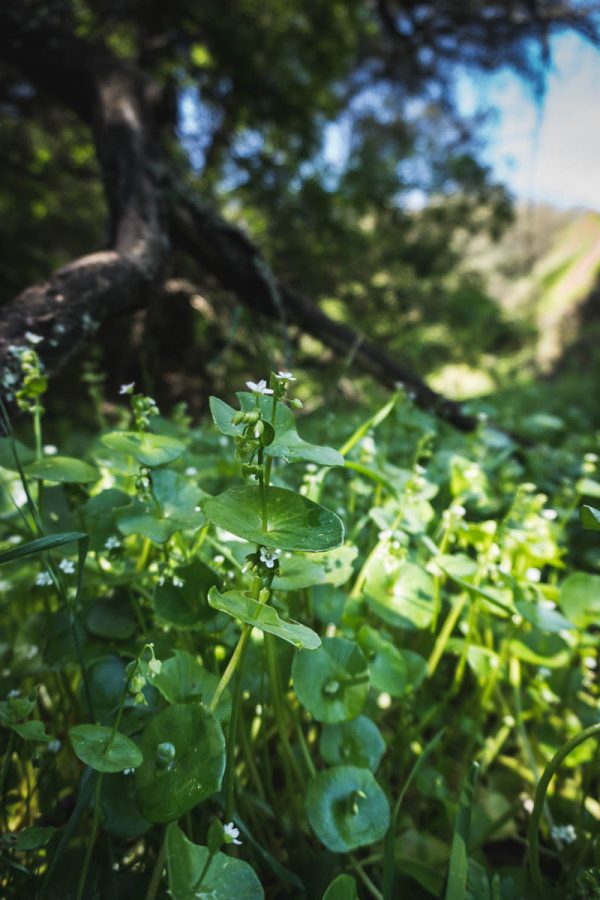
How to Enjoy Miner’s Lettuce
It’s a wonderful trail snack, and how I enjoy this green 99% of the time. Simply pick some stems as you’re hiking and munch away!
This green is best enjoyed fresh, raw or in simple preparations. Plan on eating it raw, in a salad, added to a sandwich, garnish, or just a snack. If you were camping or on a picnic, you could bring along some other ingredients to turn it into a meal salad, or, gather some to enjoy for a salad at home.
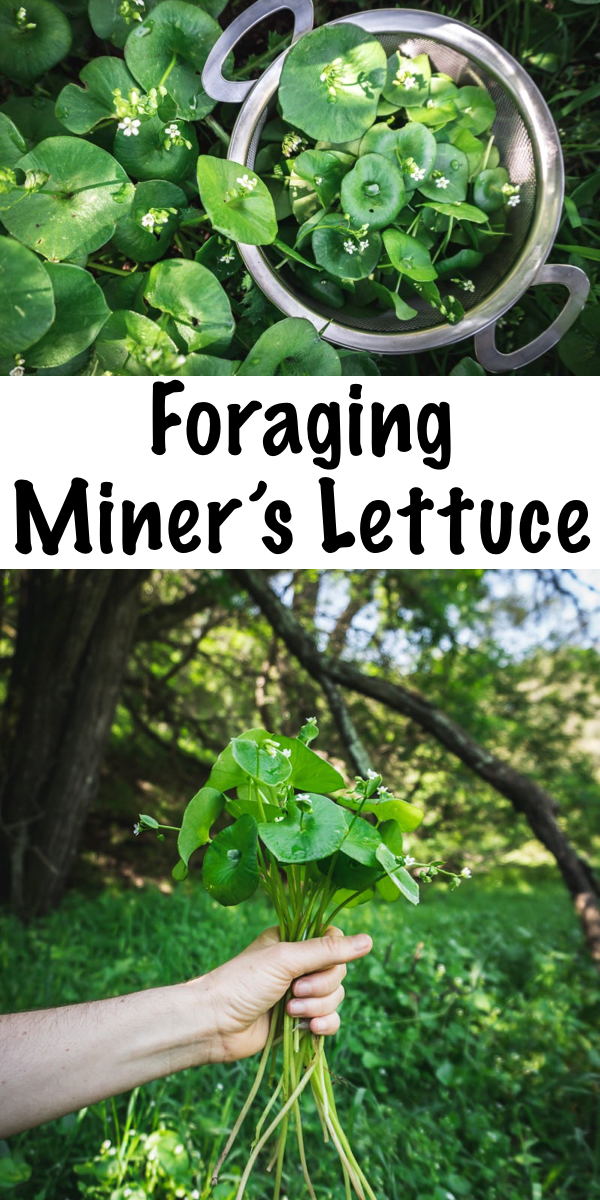














One reason I don’t forage is there is plants that are look alikes and it is not worth poisoning myself or other loved ones.I know the best way is to find someone who is experienced but I don’t know anyone in my area.
I would recommend going out and looking at the plants in your area, do some research on what you find. I like to use at least three sources to verify identification. Yes, there are a lot of look alikes out there but there are also a lot of plants that are easily identified. There are also plants that have look alikes that aren’t harmful so that would be a good place to start. Once you get to know the , it gets easier to identify them.
We have it here in Tepoztlan , Mexico , and a Danish friend who saw it here told me they eat it over there , in fact he mentioned you could buy it at the market but it was super expensive since it was wild , my kids love it and eat it every time we are in the mountains.
I actually saw it in the market here for the first time recently. It’s cultivated here, and it grows readily. We’ve grown it many times, and it’s actually pretty hard to kill once it gets going (and self-seeds). They must be making a killing selling it in the greens section of the market as a cultivated green, given that it grows like a weed =)
Do you think I could grow Miners Lettuce here in Texas in zone 9? What about indoors in the summer and then put outside in fall through spring?
I bet it’d do well outdoors in the winter there. It really is pretty darn tough, and hard to kill once it gets going. We grew it indoors in at one point overwinter in VT, and it self seeds like mad. The seeds go everywhere and grow in any crack. I actually had seedlings coming out of floorboard cracks when my kids spilled water, and a few landed on the window edge and sprouted from condensation on the glass. It’s so hard to kill, just so long as you can keep it relatively cool you should be good.
I grew up in zone 9 (California), and at least in the winter it’s not crazy hot. Should be fine for claytonia, but it won’t take zone 9 summer heat.
Ashley, I only wish to thank and commend you for the thorough research and presentation you have proven on this site. I’m sixty eight and have studied, used and made botanical drawings of, plants, since my late twenties and never seen your level of care, except perhaps in the work of M. Moore. I simply thank you and wish you the very best of good fortune.
Sincerely
Amy Caldwell
Thank you Amy, that’s so kind of you =)